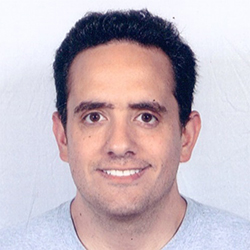Digital Twins for Continuous Manufacturing in Pharma: The Case of Dissolved Oxygen Control
Digital Twins for Continuous Manufacturing in Pharma: The Case of Dissolved Oxygen Control
Digital Twins for Continuous Manufacturing in Pharma: The Case of Dissolved Oxygen Control
Chris Somarakis, Ph.D.
Senior Scientist of Mathematical Modelling, Applied Mathematics Group, Merck & Co.
Adjunct Faculty, Mechanical Engineering Department, Rowan University
Abstract:
The Continuous Manufacturing (CM) process provides a self-contained, single-use, reconfigurable platform, that incorporates principles of automated and continuous bioprocessing. For maintaining a steady state of biomass, effective process monitoring, and controls must be in place ensuring accurate concentration of cells , the main nutrients and metabolites , the relationship between growth and metabolic data using typical in-line parameters such as pH, temperature, and dissolved oxygen (DO) concentration. An original digital twin platform is proposed for plug-and-play interaction with the closed loop regulation of DO in the bioreactor, to perform critical parameters’ identification that enables synthesis of advanced control strategies for improved regulation of DO concentration levels. The platform is designed to cope with real-world challenges of manufacturing level, including but are not limited to corrupted data, unmeasurable disturbances, insufficient knowledge of process dynamics, modelling gaps and little space for experimental designs. The platform consists of a blend of computation components designed to perform sequential calculations for on-the-fly, rapid learning, and identification, and eventually state feedback control synthesis for the process of interest. Our case study considers a fictitious problem of regulation of DO levels in bioprocess setup that mimics Merck’s CM production line. We demonstrate how the proposed digital twin architecture combines heterogeneous data from the established closed-loop process, informs its models with through inverse engineering operations and outputs a model reference adaptive feedback control strategy. We demonstrate that the proposed Digitally Twin-enabled dynamic controller outperforms the existing PID controllers.
Biography:
Christoforos Somarakis received the B.S. degree in Electrical Engineering from the National Technical University of Athens, Athens, Greece, in 2007 and the M.S. and Ph.D. degrees in Applied Mathematics from the University of Maryland at College Park, in 2012 and 2015, respectively. He was a Post-Doctoral scholar and a Research Scientist with the Department of Mechanical Engineering and Mechanics at Lehigh University from 2016 to 2019. From 2019 until 2022 he was a Member of Research Staff with the Intelligent Systems Lab at Palo Alto Research Center - Xerox. He is currently a Senior Scientist of Mathematical Modelling with the Applied Mathematics Group at Merck & Co, and adjunct faculty with the ME Department at Rowan University.